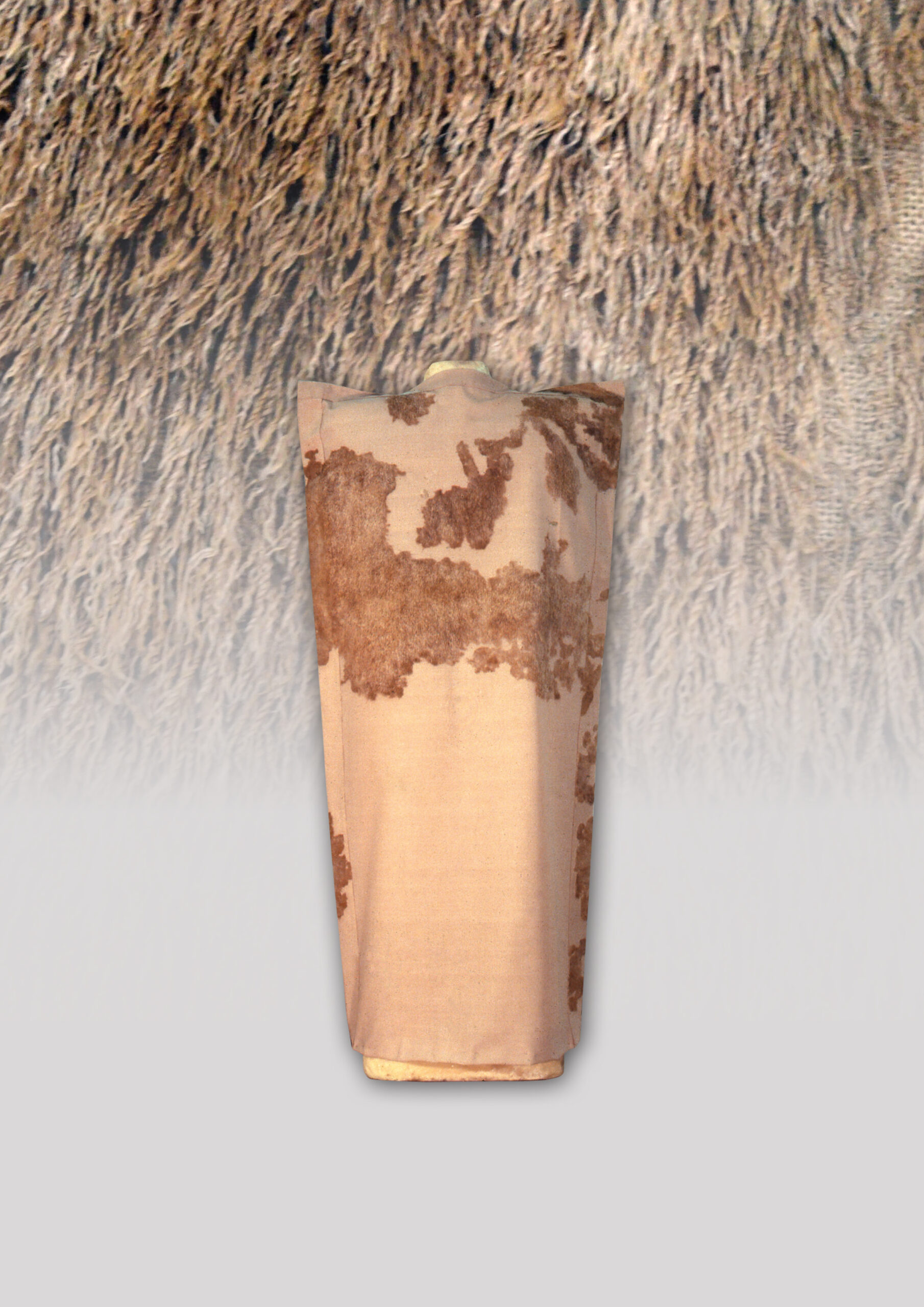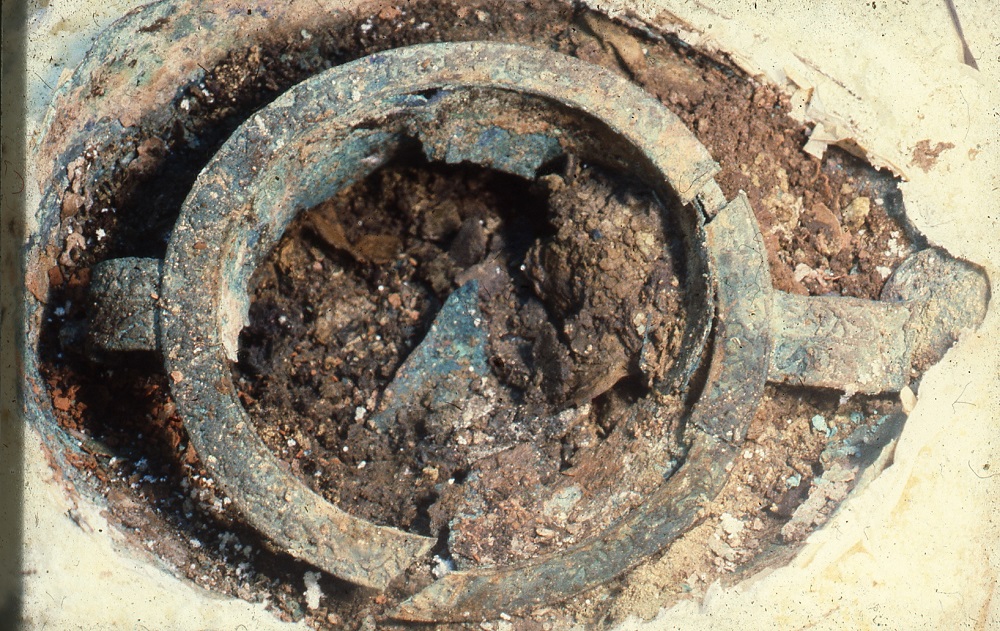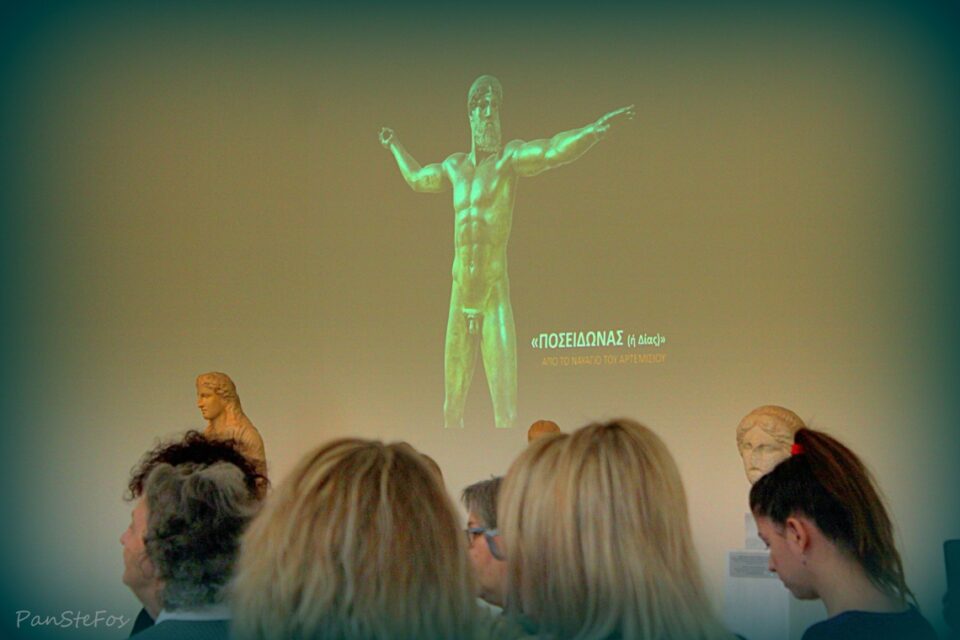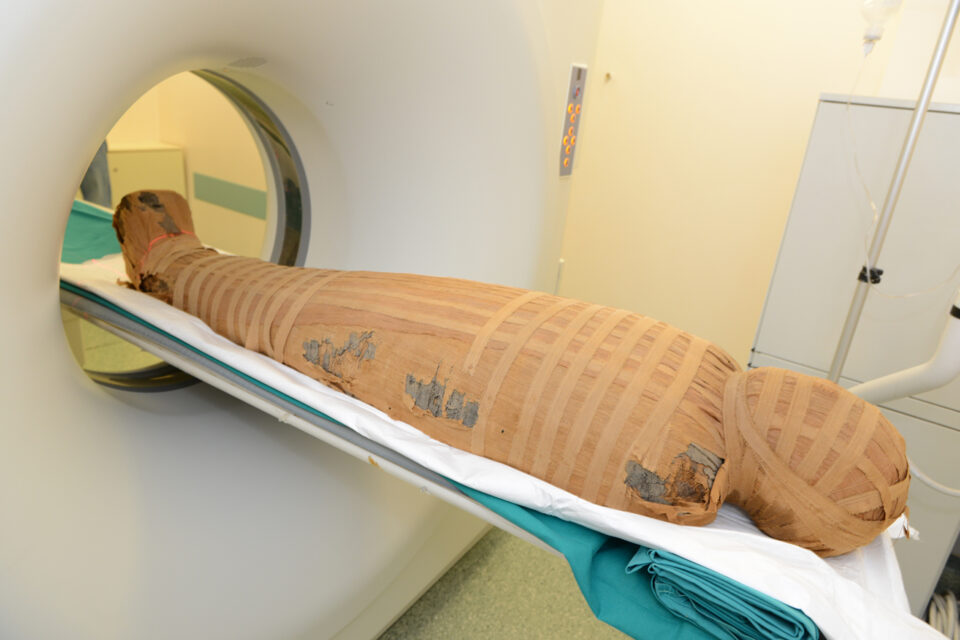The Lefkandi Textile Study Program
NAM EBN 27/1981
The long-term excavations of the British School at Athens and the Greek Ephorate of Antiquities at Lefkandi in Euboea unearthed a wealthy and intensely engaged in trade contacts settlement of the latest prehistoric times and the Early Iron Age, along with at least five cemeteries spanning the period from the 11th to the 9th cent. B.C. In the richest one of them, at the site of Toumba, buried under an artificial mound, a monumental apsidal building of the mid-10th cent. B.C. was located with an early form of peristasis (surrounding colonnade). The outstanding edifice became the eternal residence of a local lord, accompanied by his wife and horses, a funerary practice that recalls Homer’s descriptions. The ashes of the deceased were kept in a Cypriot bronze krater, a valuable heirloom predating the burial by a century at least. Inside it, neatly folded and packed was a large rectangular sheet of linen, sewn up the sides, which has been preserved in excellent condition. It was made with plain weave, while, along a large part of it, the excess of the warp threads from the borders formed fringes. Decorative bands with interwoven geometric motifs completed the clothing ensemble.
Right after its discovery in 1981, the find was taken to the National Archaeological Museum for conservation by a team of specialists under Anastasios Margaritov. It was attached to a fabric underlay and reconstructed as a sleeveless full-length garment. Since then it has been kept in a special case, designed by the chemist of the Museum, Constantinos Asimenos. The find, an important link in the chain of development of the textile industry in Europe, will be studied and reconserved using modern methods by an interdisciplinary team. Through this study it is expected to obtain answers on its creation and decoration with colours and designs, as well as on its use and connection to the prominent man of Lefkandi who had it.







